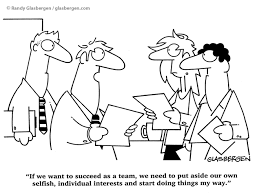Negativity has been with mankind forever. From the perspective of evolutionary psychology, we are all descendants of humans who scanned the horizon for negative (and dangerous) factors, acted to avoid these negative factors, survived, and reproduced. In today’s world, we are less likely to be eaten by a lion, bitten by a snake, or eat poisonous berries; yet negativity persists. Negativity becomes dysfunctional when our psychology interprets anything negative to be the same as seeing a lion in the bush sixty yards away.
Our Negative World
We focus too much on negativity. Countless studies have shown that more than two-thirds of our self-talk is negative. This continues when we get together in groups. Biology professor Robert Sapolsky relates that:
Anthropologists, studying everyone from hunter-gatherers to urbanites, have found that about two thirds of everyday conversation is gossip, with the vast majority of it being negative.
The media thrives on negativity because negativity sells. Look at a newspaper or listen to a news report and consider how many stories are negative and often blown out of proportion. Negativity is everywhere because it makes the person being negative appear smarter. As psychology and business professor, Teresa Amabile, writes:
“When people hear negative, critical views, they regard them as inherently more intelligent than optimistic ones; when we’re trying to seem smart to others, we tend to say critical, negative things.
The Effects of Negativity
All this negativity has a harmful effect on our individual happiness and our company morale. The more we focus on the negative, the more pessimistic we become. This is made worse by the negativity bias. As Wikipedia defines it:
Negativity bias is a cognitive bias that results in adverse events having a more significant impact on our psychological state than positive events. Negativity bias occurs even when adverse events and positive events are of the same magnitude, meaning we feel negative events more intensely.
In short, as any sports fan will know, a win does not feel as good as a loss feels bad.
Minimizing the Negativity
The first order of business is to reduce our exposure to the negative.
- Reduce the time we spend reading or listening to negative or critical material.
- Have less contact with the negative people in our lives.
- Recognize that much of the negativity that we read and hear is designed to lure us into reading or to show us how smart the writer or speaker is.
- Be less negative ourselves. As social psychologist Roy Baumeister writes:
To be a good partner…what’s crucial is avoiding the negative. Being able to hold your tongue rather than say something nasty or spiteful will do much more for your relationship than a good word or deed.
- Keep the negativity bias in mind and realize that the negative things we do read and hear are rarely as bad as they seem and that the negative predictions are usually just plain wrong.
“The fact is that negative events do affect us, but they generally don’t affect us as much or for as long as we expect them to.” Dan Gilbert (psychologist and writer)
“Similarly, we believe a lot of things because our innate negativity bias is reinforced by a constant stream of dire headlines, expert predictions of decline and doom, and vivid images of things going wrong.” Andrew McAfee (economist)
Leadership and Negativity
As leaders, our negativity affects us and our entire team. As such, we need to be even more focused on minimizing negativity. Some quick suggestions:
- Be positive and be seen to be positive almost every day. A leader’s energy and mood, whether positive or negative, is contagious. So, let’s infect our teams with positivity.
- Compliment more: Find someone doing something right every day and then compliment them.
- Rarely criticize: When good employees make mistakes, they usually beat themselves up more than we would ever beat them up. So, further criticism is just piling on.
- Avoid “but”: All too often, we give a compliment and then temper it with “but” and then a suggestion for improvement. In these situations, the employee forgets the compliment and focuses on the criticism.
- Don’t dwell on the past; but focus on the future. When a negative event occurs, we can do nothing about it except focus on how we can do better, overcome the negative event, and move our business forward.
“Learning to shift your attention away from unhelpful thoughts and emotions and recast negative events in the most productive light possible is one of the most important health [and business] habits to cultivate.” Winifred Gallagher
Conclusion
Whether as individuals in relationships or as leaders in companies, we need to accentuate the positive and minimize the negative. Martin Seligman, the father of positive psychology, summarizes the research on positivity and negativity:
Companies and relationships that are above a 2.9:1 ratio for positive statements and comments to negative statements and comments are flourishing. Below that ratio (the Losada ratio), companies and relationships are not doing well.








